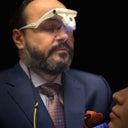Posted underArm Lift q&a
How long for stitches from brachioplasty to dissolve? Specifically, ones under the skin along the suture line. (photo)
I had brachioplasty on both arms 5 weeks ago. It is healing nicely, per my doctor. However, it feels like some of the stitches along my suture line are trying to poke through the skin.
Answers (9)
From board-certified doctors and trusted medical professionals
Dr. Jennifer Geoghegan, MD

Dr. Jennifer Geoghegan, MD
Board Certified Plastic Surgeon
Answer
Dr. Jeffrey J. Roth, MD, FACS

Dr. Jeffrey J. Roth, MD, FACS
Board Certified Plastic Surgeon
Answer
Dr. J. Timothy Katzen, MD, FACS

Dr. J. Timothy Katzen, MD, FACS
Board Certified Plastic Surgeon
Answer
Dr. Harry T. Haramis, MD, FACS

Dr. Harry T. Haramis, MD, FACS
Board Certified Plastic Surgeon
Answer
Dr. Craig Harrison, MD
Dr. Craig Harrison, MD
Board Certified Plastic Surgeon
Answer
Dr. Jonathan Hall, MD
Dr. Jonathan Hall, MD
Board Certified Plastic Surgeon
Answer
Dr. Richard D. Price, MBBS, MD, FRCS(Plast)
Dr. Richard D. Price, MBBS, MD, FRCS(Plast)
Specialist Registered Plastic Surgeon
Answer
Dr. Tom J. Pousti, MD
Dr. Tom J. Pousti, MD
Board Certified Plastic Surgeon
Answer
More Arm Lift Questions
See all Arm Lift Q&AWE SEND PRETTY
EMAILS
What’s trending? Who’s turning heads? Which TikTok myths need busting? We’ve got you. No fluff, no gatekeeping—just real talk. Get our free, unfiltered newsletter.
